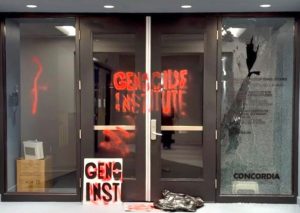We are blessed with remarkable Jewish day schools. Schools that offer Jewish studies that empower youth with the skills, knowledge, attitudes and aptitudes to lead active Jewish lives. Schools with stellar general studies that prepare students for entrance into the toughest university programs. Schools that offer athletics and arts, extracurriculars and guidance, special education and enrichment, cutting-edge technology and competitive facilities.
As the people of the Book, a people that has been sustained by a commitment to education, these are the schools that we should build and sustain. But it is expensive. Precisely because it is remarkable, it is expensive.
The question that dogs me day in and day out is how do we create remarkable schools – schools to which we want to send our children – that are less expensive?
READ: THE EDUCATIVE POWER OF A CONNECTED COMMUNITY
The starting point to answering this question is an examination of the cost structure of schools.
Across Jewish day schools – and, in truth, across most schools – 80 per cent of costs are devoted to human resources: the teachers, support workers, principals and curriculum designers who we charge with educating our children. Any sea change in the cost of schooling will be the result of changes to human resources.
Two types of new lower-cost schools have emerged, but each raises questions.
The first is a school that returns to basics. Today’s schools offer a significantly lower staff to student ratio than schools of the past. Not only are classes smaller, but more administrators, specialists, teaching aids and other adults serve students. The result is that each of today’s students is carrying a higher proportion of a full-time salary. New back-to-basics schools maximize the staff to student ratio, often foregoing what is perceived as non-core areas of schooling such as co-curricular activities, guidance, etc.
The second type of school offers disruptive new models of teaching and learning.
For generations, the model of school has not changed significantly. It takes one teacher 10 months to teach a year’s curriculum to a group of 18 to 30 students. While we have progressed from the one-room schoolhouse to multi-classroom schools, modified methodologies and integrated technology, the core cost structure of schools has not changed.
Increasingly, schools that look and feel different are being developed. Blended learning schools that mix online learning with traditional brick-and-mortar classes, work-experience-based schools that structure curriculum around internships to prepare students for the “real” world, and schools designed around team teaching and team learning that turn the 30-student classroom on its head are all models of innovative education that offer both 21st-century models of teaching and learning while significantly changing the cost structure of education.
So what’s the problem? What do we have to weigh for our schools to transition to these newer models?
READ: FINDING STRENGTH THROUGH LEADERSHIP
While the theory behind each of these innovations is compelling, quality educational research is longitudinal, requiring a multi-year evaluation of the impact on students’ knowledge and skill development. It is because of this long view that education is inherently conservative, shirking change in favour of tried and tested models.
While I might buy into the theory, am I willing to risk my child’s education to a school that’s experimental, where the methodologies have not been tested and proven over long periods of time?
We can create Jewish day schools at a significantly lower price. Doing so, however, will create schools that look and feel different than today’s offerings, and may in fact not offer as many services, and so I ask: if we lower the price, will they come? How do we create remarkable schools, schools to which we want to send our children and which are less expensive?
Daniel Held is executive director of the Julia and Henry Koschitzky Centre for Jewish Education at UJA Federation of Greater Toronto.
Photo: Ali Martell






